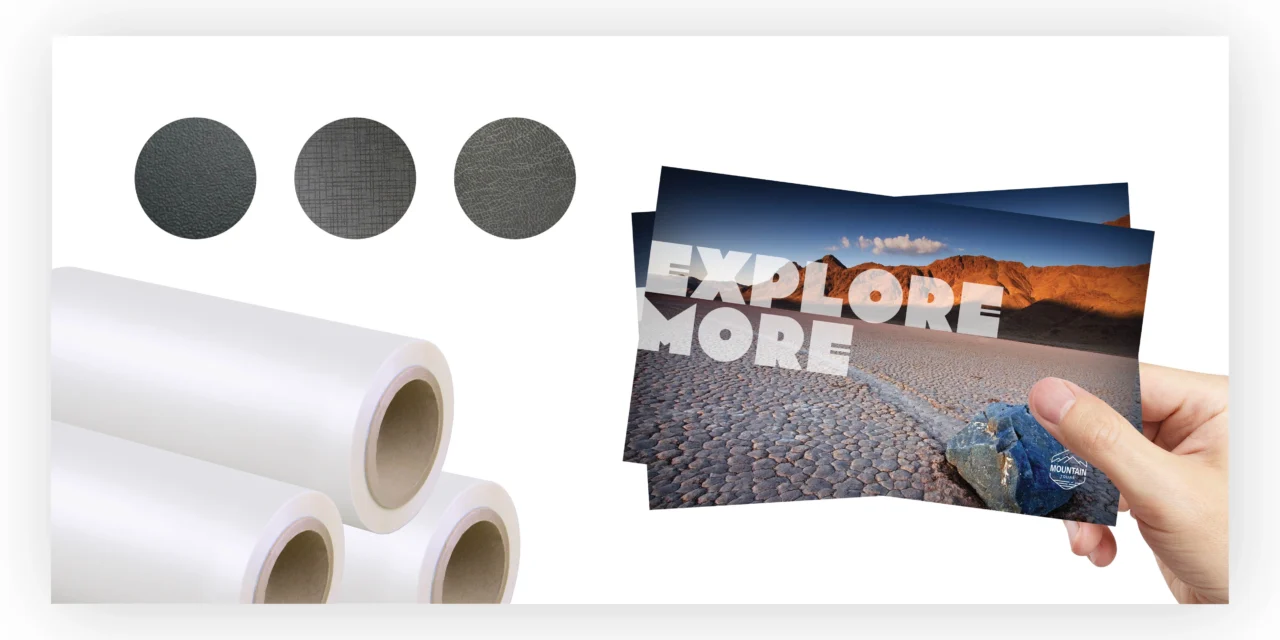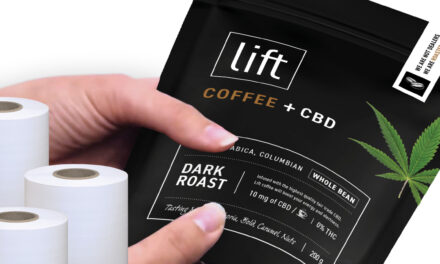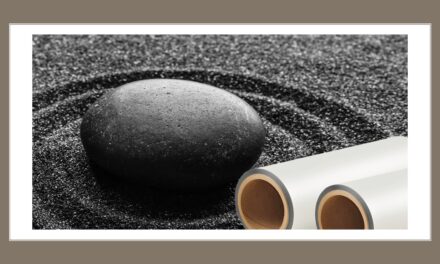USING TACTILE FINISHES TO STAND OUT FROM THE COMPETITION
As retail shelves grow ever more crowded and consumers become more selective, print service providers must rise to the challenge and create truly unique packaging that wows brands and drives sales. Fortunately, there are now more options than ever before regarding creative packaging and print finishing solutions. Engaging the senses of consumers has become as important to print service providers as the quality of the materials they use, and one of the best ways to engage the senses is through tactile finishes.
Tactile finishes include any laminate, film, coating, or emboss/deboss effect that gives prints and packaging a specific texture with the goal of drawing in consumers. The texture can vary greatly depending on the application, from soft-touch or sandpaper finishes to tiny bubbles and other raised patterns. As manufacturing technology advances, the finishes printers are able to utilize will continue to improve in quality. Tactile films and laminates can even be combined with a variety of post-laminate embellishments and value-add processes to create unique designs that have never been seen before.
HOW ARE TACTILE FINISHES MADE?
To create haptic thermal laminates and unsupported films, a textured finish is added to the base film during the manufacturing process. These finishes are typically highly durable and difficult or impossible to rub off or alter during processing, shipping, and handling. However, the way a tactile finish is applied to the film will vary depending on the material, manufacturer, and texture.
For certain finishes, the surface of the film is given a topcoat imbued with the desired texture; this method overlays the smooth surface of the base film and plays into the sense of touch, such as a soft-touch finish. Other finishes may be either overprinted on the surface of the film or embossed into a topcoat; in many cases, the effect undergoes UV curing to create a durable, solid pattern on the surface of the film. Unlike with liquid coatings, there is little to no risk that a tactile laminate or film will lose its haptic characteristics over time.
THE NOBELUS TACTILE COLLECTION
Nobelus has invested significant time and resources into making sure print service providers have a range of haptic finishes at their disposal. The Nobelus Tactile Collection consists of four innovative, high-quality finishes that help printers target different markets and brands to build loyalty and increase margins.
Karess®
Karess is well known in the print and packaging industry for its luxuriously soft surface and rich matte appearance. Perhaps the most versatile finish in the Tactile Collection, Karess comes in a variety of materials, thicknesses, and product types. For a detailed list of the different versions of Karess, read our post, “Which Type of Karess Laminate Do I Need?”
Because Karess is so diverse, it is one of the only finishes that can be used for nearly every application one can imagine. This makes it an ideal finish for brands that utilize a wide range of packaging types but want their packaging to remain consistent, a concept Nobelus refers to as Cross Market Ingenuity (CMI). For instance, a high-end health and beauty brand may sell makeup sponges in folding cartons, lotion in sachets, creams in bottles and jars with decorative labels, bath bombs in stand-up pouches, and lip balm in blister packs with a decorative paperboard backing.
While the applications and products vary greatly, this brand will likely want to maintain strong branding consistency across every type of packaging to build brand loyalty and command their desired margins. A finish like Karess can accommodate every one of these applications and more, ensuring the velvety soft appeal of Karess becomes inextricably connected to the brand’s name and products.
Karess has a rose petal feel that communicates a sense of decadence to consumers, making it an excellent finish for a first interaction. In most cases, consumers are intrigued by the unique, pleasant feel of the package and develop a subconscious assumption that the product or service the print is advertising may be of similar quality and luxury. For this reason, Karess is an excellent option for startups and smaller brands that want to convince consumers to give their product a try based on the packaging.
FineGrit™
In direct contrast to Karess, FineGrit is an earthy, rugged finish with a texture similar to fine grain sandpaper. To give it this distinctive tactile appeal, the film receives a topcoat in manufacturing that is then embossed and cured. This process creates a stippled surface that is incredibly durable and cannot be rubbed off even with regular handling or use. Our post “FineGrit Laminate: The Rugged Finish for Premium Brands” goes into more detail if you would like to learn more about the properties of FineGrit.
FineGrit is such a durable finish that it resists scratching and scuffing, making it an excellent choice for protecting printed designs. The combination of this durability and the gritty texture means that FineGrit is a natural choice for markets and brands that want to convey a sense of toughness or grit. Packaging for tools, exercise products, pet goods, and other outdoor- or activity-focused products is a prime application for a rugged finish like FineGrit.
FineGrit is available in both thermal laminate and adhesive-free film versions. This enables it to be utilized for a variety of applications and packaging formats, including folding cartons, prime labels, stand-up pouches, and sachets. While it does not come in as many iterations as Karess, FineGrit is still an excellent option for brands that want to maintain strong brand consistency across a variety of packaging types.
FineLinen™ and FineLeather™
Both these finishes are created by overprinting a detailed pattern onto the surface of the film. This printed layer is highly durable, which means the patterns cannot be rubbed off in transit or in the hands of intrigued consumers as they browse the store shelves. While these finishes are not as pronounced as Karess and FineGrit, they each provide a unique effect that caters to specific markets.
Subtle yet elegant, FineLinen gives prints and packaging a woven fabric appeal. It is especially popular for wedding invitations, photo albums, business cards, and wine boxes because it conveys a classic, refined feel. While FineLinen is available only as a thermal laminate, it is thin and malleable enough to be used in many different digital flexible packaging applications, including stand-up pouches, sachets, and three-sided sealed bags.
Similar in many ways to FineLinen, FineLeather is a more subtle finish that gives applications a classy leather pattern. Its leather look is accentuated by brown, black, and other dark colors, and it is excellent for any brand that wants to make its packaging look upscale or sophisticated. Use FineLeather to add value to business cards, packaging for self-care goods, soft and hardcover books, and much more. This thermal laminate can be used for digital flexible packaging applications, including pouches, bags, and sachets.
WANT TO ORDER A SAMPLE ROLL?
Nobelus offers sample rolls upon request at no cost. If your curiosity was piqued by any of the finishes outlined above but you don’t want to commit to a full order, contact us to perform a risk-free trial run. Our solutions experts are always available to answer any questions you may have about products, equipment, and even general financial or workflow considerations. We have helped hundreds of businesses integrate specialty tactile packaging into their value propositions and would love to learn more about your operation to see how the Nobelus Tactile Collection can help you increase your revenue and draw in new customers.



